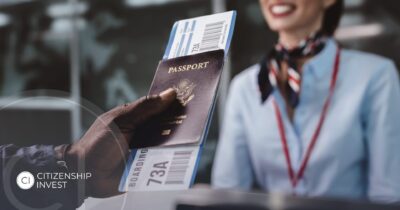

An in-depth look at how EES, ETIAS and ETA will redefine travel for the year ahead
As global travel evolves in the digital age, 2025 marks a significant shift with the introduction of advanced border control systems designed to enhance security and efficiency. The European Entry/Exit System (EES), the European Travel Information and Authorization System (ETIAS), and the UK Electronic Travel Authorization (ETA) are the three main initiatives set to streamline travel while strengthening border management in the Western world. However, with these changes come new requirements that travellers must navigate to avoid disruptions. Understanding how these systems operate will be crucial for seamless, hassle-free journeys across international borders.
Entry/Exit System (EES):
One highly anticipated initiative is the EES, which replaces traditional passport stamping with digital entry and exit for non-EU travellers. It tracks stay durations automatically, ensuring compliance with Schengen visa rules. Initially, the EES was expected to launch on November 10, 2024, just before the busy holiday travel period. However, the rollout was delayed this past fall and is now scheduled for mid-2025.
Under the new requirements, travellers must scan their passports or other travel documents at a self-service kiosk each time they cross an EU external border. The system will register the traveller’s name, biometric data, and the date and place of entry and exit. Facial scans and fingerprint data will be taken every three years and are valid for multiple trips. This requirement does not apply to legal EU citizens, residents or those with long-stay visas. It will apply when entering all EU member states, apart from Cyprus and Ireland, as well as the four non-EU countries in the Schengen Area: Iceland, Lichtenstein, Norway and Switzerland.
ETIAS (European Travel Information and Authorization System):
Six months after the EES is up and running, travellers must also apply for the European Travel Information and Authorization System (ETIAS), a visa-waiver programme for travellers between the ages of 16 and 70. The main difference now is that travellers have to get this pre-travel authorisation before entering the country, while before, they could present their passport upon landing. These are technically travel visa waivers attached to a person’s passport, permitting them into the country for a certain period. They are not needed if a person already has a proper travel visa.
The ETIAS will cost €7 and be valid for three years. Applicants must provide personal details and security-related information to gain approval. The ETIAS system is set for 30 European countries, not including the United Kingdom, whose new application is separate.
UK Electronic Travel Authorization (ETA):
Separate from ETIAS, the United Kingdom’s now-required Electronic Travel Authorisation (ETA) went live on January 8, 2025. It applies to visa-free travellers heading to the UK and allows authorities to pre-screen visitors for added security and convenience. Since it went live, applications have been accepted online or through the ETA app for travel.
The ETA will be required for travellers wanting to visit the UK for six or fewer months, coming to the UK for a permitted paid engagement, or having a layover/travel elsewhere through the UK. Children and babies also need an ETA if the above points apply. Travellers can apply for ETAs on behalf of someone else as long as they have the materials outlined below. According to the NY Times, travellers connecting through airports in the United Kingdom with final destinations elsewhere will also need to apply for ETA. However, this policy is currently under review.
Applicants must submit a passport and photo and be asked to answer security questions and provide contact information. Details about travel plans are not necessary. However, the application costs £10 and, if approved, lasts up to two years. Travellers who have their ETA applications rejected can apply again, and they will be told why their application was unsuccessful. Applicants not granted an ETA will need to apply for a visa.
What travellers need to know
Preparation is key to navigating these new requirements. We highly recommend planning ahead and checking your eligibility to verify whether your destination requires ETIAS or UK ETA authorisation. We also recommend applying for travel authorisations early to avoid delays and following updates on travel regulations as implementation progresses.
With these systems already being rolled out, understanding their requirements can save time and ensure a seamless journey. Being prepared is essential to adapt to the evolving landscape of global travel.